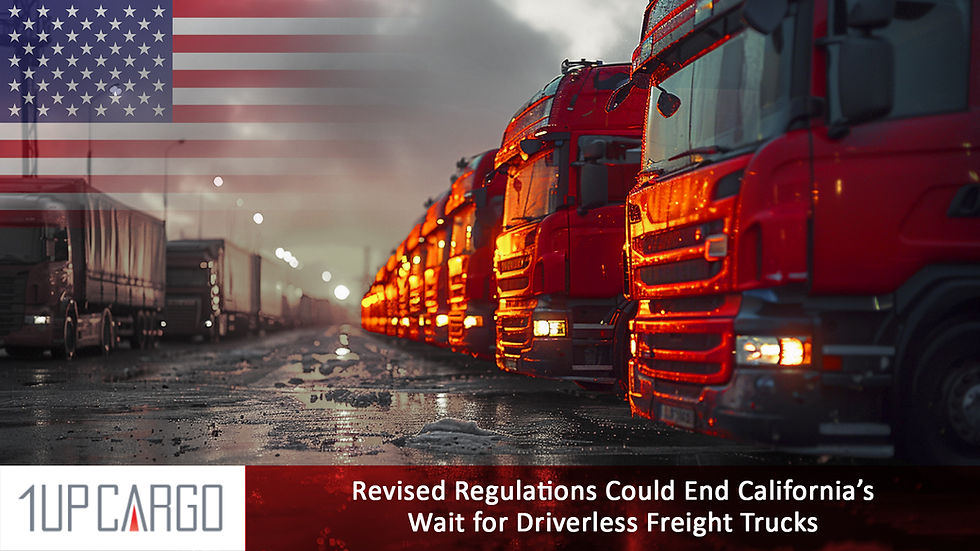Carriers, Railways and Shippers Tackling Costs in a Post-Pandemic Market
- bianca037
- Mar 7, 2023
- 3 min read
Updated: Mar 9, 2023
The retailer is also applying pressure on carriers in the process.
“We see it as a great opportunity to go test the market,” Osorio told the crowd. “Transactional relationships will continue to be part of the equation.” Then again, he also stressed the need to build stronger relationships with carriers to improve productivity and limit bobtailing from one location to another.

Intermodal technology
For its part, CN continues to explore technical solutions to improve intermodal freight activity, even though some of the congestion experienced last year has eased.
“If you went to Brampton, we’ve had a very painful implementation over the last month of a yard inventory system that is supposed to be more efficient when we get it up and running as it’s supposed to be,” said Gary Crowther, director – supply and strategy. “That will help our trucks get in and out of our terminals faster, which will promote better on-time delivery.”
A new app, meanwhile, makes it possible to clear up congestion at the gate, rather than leaving people to wait their turn with a help desk.
An ongoing collaboration with Google Cloud will also increasingly apply artificial intelligence and machine learning to deliver more visibility to supply chain partners.
“We’re doing everything we can to bring our terminals, and the first and last mile experience with our own trucks and our customers’ trucks, to have a better experience,” he said.
Productivity gains are being realized on the iron rails as well. In the past year, CN experienced a 14% increase in volume even though it had 15,000 fewer units in the system, he said. “If we can get the trains running on time, then everything else will fall into place.”
Controlling costs
A heightened focus on appointments and scheduling will play a key role in controlling inflation, added Ricky Stover, AVP – sales and marketing, domestic intermodal at CP.
“That’s how we manage the first mile/ last mile performance better. It’s [about] getting it right the first time.”
Karine Goyette, executive vice-president at CAT, said her fleet is looking at evermore ways to leverage its size to control costs. “There [are] opportunities for economies of scale and the buying power,” she said.
So, too, is it looking at immigration to address labor shortages. “If there’s an opportunity for someone in another country who can prove they have the experience, we’re willing to teach them,” she said.
The fleet isn’t alone in the challenges of sourcing labor.
“There’s nothing tougher than going out and finding the right people that are going to fit into your organization over the long term,” Crowther said, referring to sales teams as a particular challenge. Candidates in Toronto and Vancouver tend to be too pricy for work elsewhere.
Using internal talent
Solutions have involved sourcing candidates from existing ranks.
“We tend to take 80% of people in our group from other parts of CN,” he said, referring to a chemical engineer who became an account manager in Edmonton. “He speaks the same language as the market out there,” he said of the perfect fit. “We try to do that, to promote from within, to give people at our company options to do something different – which helps with retention.”
Kriska Group faces a series of challenges when looking to put people in the driver’s seat — from newly licensed drivers who believe their training is complete, to a shrinking pool of owner-operators, and job candidates who insist on being treated and paid as independent contractors even when they aren’t.
“It’s nonsense. They’ve been trained to think that’s the best way to become employed, and it isn’t right,” CEO Mark Seymour said of the Driver Inc. model.
The pressures are not limited to a driver shortage. Unable to fill some roles in Ontario, Kriska now has more than 50 people conducting administrative work in Bosnia and Serbia. “We can hire people over there with half the price,” he said.
Cost pressures in trucking
And the cost pressures don’t end there.
“This inflationary pressure as it relates to labor, equipment, parts, and access to all of the above, it doesn’t seem to be post-Covid, like back to normal,” Seymour said. “Or maybe this is the new normal.”
It’s why he stresses the importance of business relationships that are more than transactional alone.
“We often have to engineer a solution with a customer based on a lane and based on volume and all the things that go with moving something from A to B,” he said. “If you want to give a reasonable price, it takes a lot of work.”
But when a relationship is strictly transactional, it’s impossible to offer the best service at the best price, Seymour added.
“I understand the reason why traffic managers are mandated to test the market,” he said. “It’s very frustrating when we find ourselves playing the market game.”
Credit: trucknews.com by John G Smith


